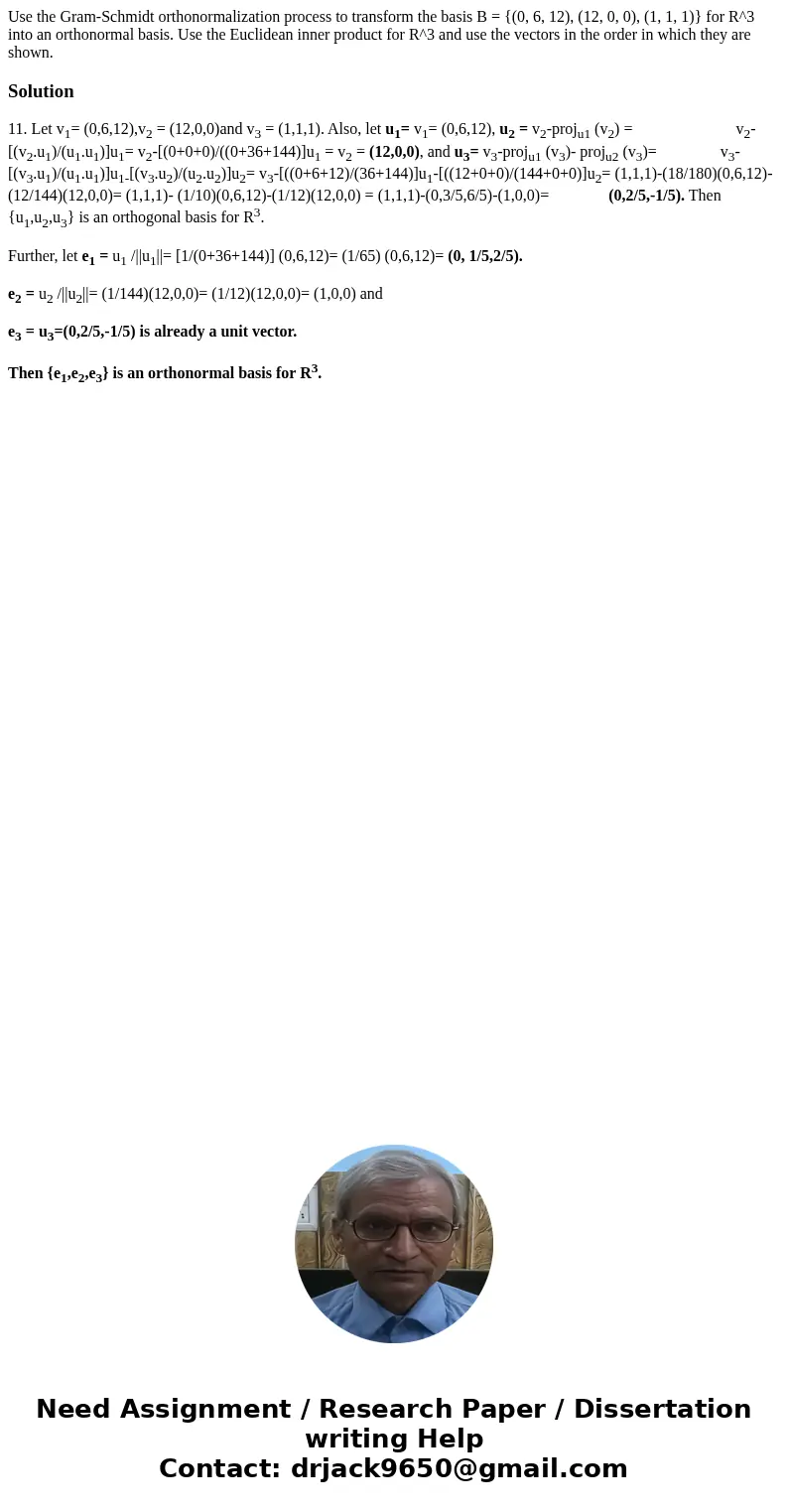Use the GramSchmidt orthonormalization process to transform
Solution
11. Let v1= (0,6,12),v2 = (12,0,0)and v3 = (1,1,1). Also, let u1= v1= (0,6,12), u2 = v2-proju1 (v2) = v2- [(v2.u1)/(u1.u1)]u1= v2-[(0+0+0)/((0+36+144)]u1 = v2 = (12,0,0), and u3= v3-proju1 (v3)- proju2 (v3)= v3-[(v3.u1)/(u1.u1)]u1-[(v3.u2)/(u2.u2)]u2= v3-[((0+6+12)/(36+144)]u1-[((12+0+0)/(144+0+0)]u2= (1,1,1)-(18/180)(0,6,12)-(12/144)(12,0,0)= (1,1,1)- (1/10)(0,6,12)-(1/12)(12,0,0) = (1,1,1)-(0,3/5,6/5)-(1,0,0)= (0,2/5,-1/5). Then {u1,u2,u3} is an orthogonal basis for R3.
Further, let e1 = u1 /||u1||= [1/(0+36+144)] (0,6,12)= (1/65) (0,6,12)= (0, 1/5,2/5).
e2 = u2 /||u2||= (1/144)(12,0,0)= (1/12)(12,0,0)= (1,0,0) and
e3 = u3=(0,2/5,-1/5) is already a unit vector.
Then {e1,e2,e3} is an orthonormal basis for R3.

 Homework Sourse
Homework Sourse